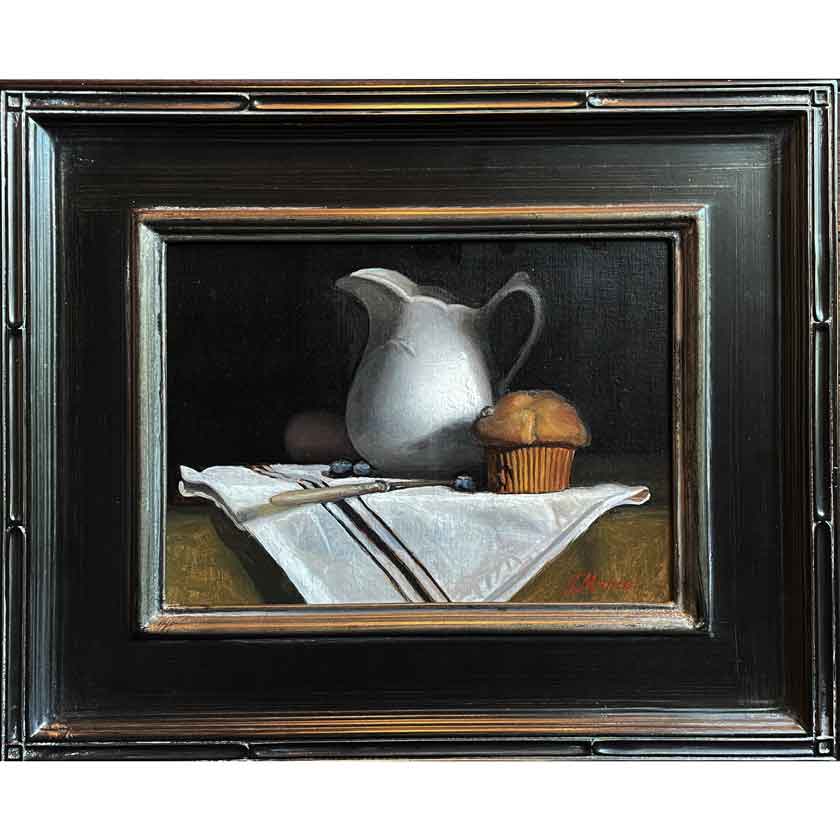Exploring Everything About Oil Paintings: A Guide to Understanding Their Appeal and Value
Oil paintings have astounded target markets for centuries, using a look into the artistic proficiency of numerous periods. Their abundant history is intertwined with cutting-edge methods and profound emotional expression. Recognizing the materials and methods behind these art work can boost admiration. Furthermore, the market for oil paints offers possibilities for collection agencies and capitalists alike. As one explores this remarkable globe, the question arises: what makes an oil paint absolutely beneficial?
The History of Oil Painting: A Journey Through Time
Although oil paint has origins that date back to old times, it absolutely grew during the Renaissance, when musicians discovered its versatility and rich shade capacity. Early instances can be traced to the 7th century, with strategies progressing significantly across societies. The medium ended up being prominent in Northern Europe in the 15th century, especially via the works of musicians like Jan van Eyck, that originated its use for in-depth realism and dynamic tones. This period marked a separation from tempera paints, allowing for higher deepness and appearance. As oil paint spread, it influenced many musicians, resulting in work of arts by renowned figures such as Leonardo da Vinci and Rembrandt. The tool's legacy continues, forming the art globe well into modern times.
Comprehending Oil Repaints: Materials and Techniques
As artists discover the world of oil paints, they experience a varied selection of materials and strategies that define this tool. The main parts of oil paint include pigments, which offer color, and drying oils, such as linseed, that bind the pigments and assist in application. Different additives can customize the paint's texture and drying time, enhancing adaptability. Strategies like glazing, where clear layers are accumulated, and impasto, which includes using thick paint, enable various aesthetic impacts. Furthermore, making use of brushes, palette knives, and also fingers can develop unique textures and finishes. Recognizing these products and methods allows musicians to completely share their creativity and achieve the wanted effect in their art work.
The Function of Color in Oil Paintings
Color plays an essential duty in oil paintings, affecting both aesthetic appeal and psychological resonance. Understanding shade theory basics, consisting of the connections in between colors, can enhance a musician's ability to share mood and atmosphere. Additionally, understanding color blending techniques permits greater deepness and richness in a painting's scheme.

Color Concept Fundamentals
Comprehending shade concept is vital for artists dealing with oil paints, as it forms the foundation for producing aesthetically appealing and unified make-ups. Color theory incorporates the research of how shades interact, the shade wheel, and the connections between primary, secondary, and tertiary shades. Artists use corresponding shades to boost contrasts and create focal factors, while similar colors promote unity and cohesiveness within an item. Furthermore, the ideas of cozy and trendy colors influence the assumption of depth and space in a paint. Comprehending these principles enables musicians to adjust shade efficiently, assisting the audience's eye and connecting their intended message. Proficiency of color theory inevitably improves an artist's ability to communicate feelings and ideas with their job.
Psychological Influence of Color
The emotional influence of color in oil paintings plays a vital role in exactly how visitors connect and perceive with artwork. Shades stimulate particular sensations and moods, influencing the customer's mood. For example, cozy hues like reds and oranges can develop a feeling of heat and energy, while cool tones such as blues and environment-friendlies typically evoke peace or self-questioning. Artists purposefully pick shade combinations to enhance narrative aspects, directing the audience's psychological journey. The saturation and contrast of shades further amplify these impacts, drawing interest and producing emphasis. Ultimately, the interaction of shades in oil paints not only improves their aesthetic appeal however likewise functions as a powerful tool for emotional expression, enhancing the audience's experience and interpretation.
Color Mixing Techniques
While numerous aspects of oil paint add to the overall structure, grasping color blending methods is crucial for achieving desired results and deepness. Color blending can be approached with various approaches, including the subtractive and additive processes. Additive blending entails combining colors of light, while subtractive mixing depends on pigments, where shades mix to develop new tones. Musicians usually make use of a restricted scheme to produce unified works, understanding the partnerships between primary, second, and tertiary colors. Strategies such as glazing and scumbling even more boost deepness and brightness. By masterfully mixing colors, a musician can stimulate feelings, develop centerpieces, and achieve a sense of realism, inevitably raising the painting's psychological and visual effect.
Famous Oil Painters and Their Iconic Functions

Famed for their mastery of shade and technique, oil painters have actually created a few of one of the most celebrated artworks in background. Distinguished musicians like Vincent van Gogh captivated target markets with his emotive brushwork in "Starry Night," while Claude Monet's "Impression, Daybreak" laid the groundwork for Impressionism. Leonardo da Vinci's "Mona Lisa" remains a long-lasting sign of imaginative wizard, showcasing his ability in catching human expression. On the other hand, Rembrandt's "The Evening Watch" shows his ingenious use light and darkness. Various other significant figures include Pablo Picasso, who transformed contemporary art with his strong testing in works like "Les Demoiselles d'Avignon," and Georgia O'Keeffe, whose vibrant representations of blossoms and landscapes helped specify American innovation. Each artist's unique design contributed considerably to the oil painting landscape.
How to Evaluate the Top Quality of an Oil Painting
Assessing the quality of an oil paint includes a careful analysis of workmanship methods, along with an evaluation of shade and make-up. Observing brushwork, layering, and the application of paint can reveal the musician's ability degree. Additionally, the interaction of colors and the total setup of components add significantly to the painting's aesthetic worth.
Assessing Workmanship Strategies
A thorough evaluation of workmanship techniques is crucial for establishing the quality of an oil paint. Evaluators must first take a look at the application of paint; thick, textured brushstrokes might recommend a proficient hand, while overly uniform applications can suggest a lack of deepness. oil paintings for sale. The layering strategy is also crucial; the presence of glazes and differed density can enhance luminance and complexity. Furthermore, the quality of the products used, such as the canvas and pigments, plays a considerable duty in durability and total aesthetic. Focus to information in aspects like sides and changes between shades shows the musician's commitment to their craft. Inevitably, these methods add to the painting's psychological influence and market worth, functioning as signs of the artist's skill and intent
Assessing Shade and Composition
While examining the high quality of an oil painting, one must concentrate on the interaction of shade and composition, as these elements are fundamental to the artwork's general effect. Shade options can stimulate feelings and develop mood; consequently, the musician's scheme need to be analyzed for consistency and contrast. A well-balanced structure guides the visitor's eye and develops a feeling of unity. Musicians frequently utilize strategies like the rule of thirds or leading lines to improve aesthetic interest. Furthermore, making use of light and shadow can include depth, boosting the three-dimensionality of the painting. Inevitably, an effective oil painting marries color and structure, engaging the viewer and welcoming a much deeper admiration of the artist's vision and technique.
Caring for and Preserving Oil Paintings
Appropriate treatment and preservation of oil paintings is vital for preserving their honesty and long life. To protect these artworks, it is vital to present them far from straight sunshine, which can create fading and staining. Preserving a steady atmosphere with controlled temperature and humidity further aids in avoiding damage. Cleaning ought to be done carefully utilizing a soft, dry fabric, preventing any kind of severe chemicals that can hurt the paint or varnish. Regular assessments for indications of wear and tear, such as breaking or flaking, are advisable. When carrying or storing oil paints, correct padding and framework are required to stay clear of physical harm. Inevitably, diligent care adds to the visual allure and value of oil paintings over time.
The Market for Oil Paints: Spending and collecting
Comprehending the marketplace characteristics for oil paintings is crucial for collection agencies and capitalists alike. The worth of these art work is affected by various aspects, consisting of the musician's reputation, historical value, and existing trends. Enthusiasts frequently seek pieces that reverberate personally while thinking about potential gratitude in value. Auctions and galleries work as main places for trading, with costs fluctuating based on demand and rarity. Buying oil paintings needs study right into the marketplace, as well as an understanding of authenticity and provenance. Additionally, emerging artists may supply possibilities for substantial returns, while developed names can regulate high rates. Overall, a calculated strategy to collecting can produce both visual satisfaction and financial incentives.

Often Asked Inquiries
What Are the Ecological Influences of Oil Painting Materials?
The environmental effects of oil painting materials include the launch of unpredictable natural substances (VOCs), hazardous waste generation, and resource extraction for pigments. These elements add to contamination and ecological deterioration, elevating issues amongst environmentally mindful artists and consumers.
Just How Do Different Canvases Impact Oil Paint Results?
Different canvases affect oil painting results significantly. Surface area, structure, and absorbency top quality can modify paint application, drying out times, and shade vibrancy. Artists commonly pick certain canvases to accomplish desired effects and boost their imaginative expression.
Can Oil Paintings Be Brought Back if Damaged?
Oil paintings can without a doubt be recovered if harmed. Expert conservators utilize numerous strategies to repair tears, tidy surfaces, and address discoloration, making certain that the art work keeps its original appeal and value for future generations.
What Are the Signs of an Initial Oil Painting?
The indicators of an original oil paint consist of visible brush strokes, structure variations, and an irregular canvas weave (oil paintings for sale). Furthermore, authenticity may be verified with provenance, signatures, and the existence of a varnish layer special to oil tools
Exactly How Has Modern Technology Influenced Modern Oil Paint Techniques?
Modern technology has actually substantially affected contemporary oil paint methods by introducing digital tools for preparation, boosted products for structure and longevity, and online systems for sharing and marketing art, consequently broadening musicians' innovative possibilities and target market get to. Oil paint has roots that date back to ancient times, it truly flourished throughout the Renaissance, when musicians found its flexibility and abundant shade potential. The psychological effect of shade in oil paintings plays a critical role in exactly how visitors view and link with artwork. While lots of facets of oil paint contribute to the overall structure, understanding shade blending techniques is vital for attaining preferred impacts and depth. Evaluating the quality of an oil paint entails a mindful evaluation of workmanship methods, as well as an evaluation of shade and make-up. While evaluating the quality of an oil painting, one should concentrate on the interplay of shade and check here make-up, as these components are basic to the art work's total influence.